Posts Tagged ‘orono ice dam removal’
Tuesday, February 7th, 2017
How to Prevent Ice Dams on Your Home – Answers from the Experts
Overview
To be frank, the entire concept of ice dam prevention is a little bit disingenuous. There are certain circumstances where even the most well constructed, well insulated and ventilated roof system will get ice dams. Those situations are rare, but they do occur. When we talk about ‘prevention’, what we are realistically discussing is the field of work aimed at either reducing the likelihood of ice dams or minimizing the impact of ice dams if they do occur.
Two Approaches to Ice Dam Prevention:
We break ice dam prevention into two broad categories; Architectural and Non-Architectural. Architectural solutions involve modifications to the existing structure to alter the problematic thermal characteristics that are contributing causes of ice dams. In contrast, Non-Architectural solutions are comprised of the work done to minimize the impact of unwanted roof and gutter ice accumulations when they are likely to begin.
Architectural Approach
It’s seldom the case that a single home medication, once implemented, will permanently fix an ice dam problem. More often than not ice dam prevention involves a combination of changes in order to have a significant impact.
A very standard ice dam prevention project for The Ice Dam Company might involve enhancing or replacing the insulation in the attic or roof system, adding ventilation and sealing all of the air-leaks between the heated spaces and the attic and roof framing. Usually, this combination of endeavors yields good results. Sometimes it is necessary to alter the roofing system itself. Normally, this means installing a single ply roof system such as hand-soldered copper pans or a rubber membrane. Single ply roof systems are quite resilient in the face of ice dams but they will to work in all areas due to aesthetics. We will dig further into each of the three basic architectural solutions in other Case Studies.
Certain ice dam creation factors cannot be addressed through Architectural solutions such as insulation, ventilation, air-sealing or roof system enhancements. Case Study #19 discusses the relationship between the sun and ice dams. We recently installed heat tape on a 6 year old, $3.8 million dollar home. The homeowner had spared no expense relative to energy efficiency in the original design and construction. That was not the issue. The problem was simply that the sun was melting the snow on an exposed roof plane higher on the home which resulted in melt water running down to a cold eave area that was hidden from the sun. There it would re-freeze in cycles to create an ice dam that kept coming back year after year.
Non-Architectural Approach
In terms of ice dam prevention, there is a small set of options available that fall outside of the Architectural solutions. These involve systems to manage snow and ice accumulations as they develop on a roof. The most popular Non-Architectural ice dam solution is heat cables. Otherwise known as heat tape and roof deicing, heat cables are wires that warm up in response to electrical current. Typically, heat cables are installed in a serpentine or zig-zag pattern on a roof along the eaves. To be clear, heat cables do not resolve the underlying issues related to why ice dams are happening rather they help manage the issue of unwanted ice accumulations when the conditions are ripe for their formation. A common complaint about heat tape is that it does not address the real issues causing the ice dams. This complaint is justified because it is true. That said, heat cable systems can be installed on a home for a fraction of the cost of traditional Architectural solutions. Many homeowners are not in the position to spend $5,000 to $25,000 for Architectural ice dam solutions making the idea of a $1,000 heat cable system very appealing. We do both approaches every day.
We would be remiss in not mentioning the very most basic thing you can do to minimize the likelihood of ice dams; Roof shoveling. Diligently removing the snow from your roof can greatly reduce the likelihood of ice dams. Unfortunately, some roofs are too high or have areas inaccessible to the average homeowner, making roof snow removal an ineffective approach to guaranteed ice dam prevention. Removing all of the snow from the roof planes affected by the ice dams is very important. See the Ice Dam Company Case Study #3 that discusses a phenomenon called the ‘Double Dam’.
To read more Case Studies click here.
Tags: about ice dams, best ice dam removal in minneapolis, best rated ice dam removal contractor, commercial ice removal, edina ice dam removal, heat tape and ice dams, heat tape ice dam prevention, highest rated ice dam removal company in minneapolis, ice removal company, minneapolis ice dam removal, orono ice dam removal, preventing ice dams, twin cities ice dam remover, wayzata ice dam removal
Posted in Ice Dam Heat Tape, Ice Dam Prevention, Ice Dam Removal, Ice Dams, Misc., Ice Dams: General Info | Comments Off on Ice Dam Prevention: Two Approaches
Thursday, December 15th, 2016
A Simple Explanation of Where the Water Goes When Ice Dams Cause Leaks
Where the Water Travels:
Water hitting the Top Plate of the wall (A) spreads out across the top plate, travels downward with gravity, working behind the Siding (B) the Housewrap (C), the Insulation (D), the Vapor Barrier (E) and the Drywall (F). Water always seeks the path of least resistance and therefore frequently shows up through existing penetrations in the ceiling such as lights. Water leaks caused by ice dams can travel many feet from the source before manifesting inside the home. On homes built with vapor barriers on top of the ceiling finish, water will sit on top of the drywall and soak the insulation before leaking inside.
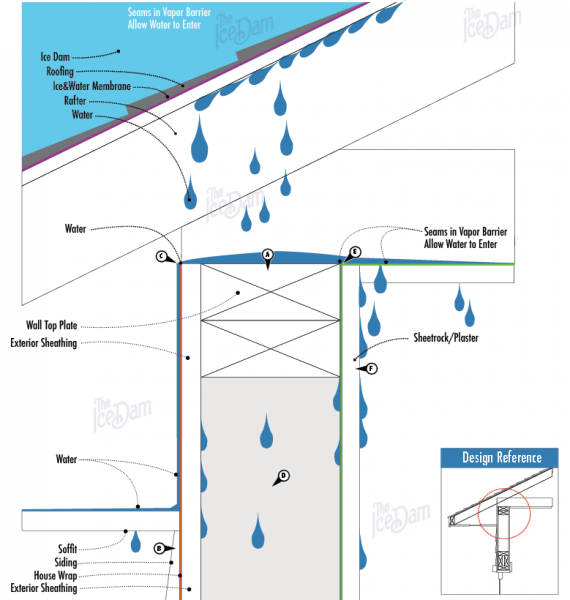
To read more Case Studies click here.
Tags: about ice dams, best ice dam removal in minneapolis, best rated ice dam removal contractor, edina ice dam removal, edina ice dam steaming, heat tape, heat tape ice dam, heat tape ice dam prevention, highest rated ice dam removal company in minneapolis, how do I know I have ice dams, how to tell if an ice dam is a problem, ice and snow removal, ice dam heat cable, orono ice dam removal, twin cities ice dam remover, wayzata ice dam removal
Posted in Ice Dams, Misc., Ice Dams: General Info | Comments Off on Close Up of an Ice Dam Leak
Monday, December 5th, 2016
1. Water Damage
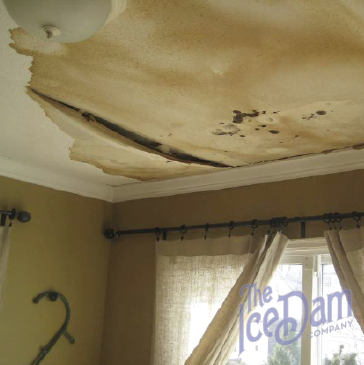
2. Ruined Insulation
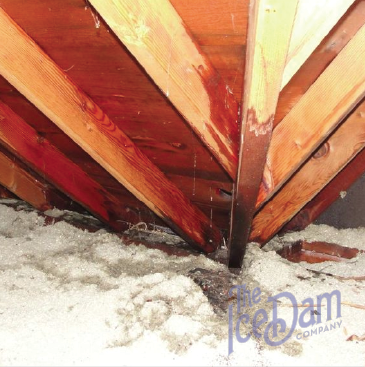
3. Mold and Mildew
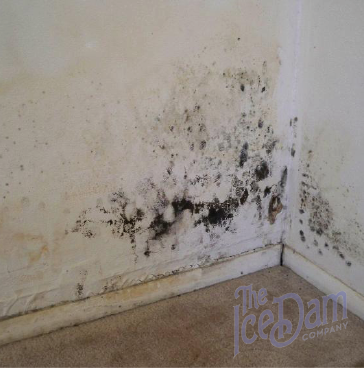
4. Gutter Damage
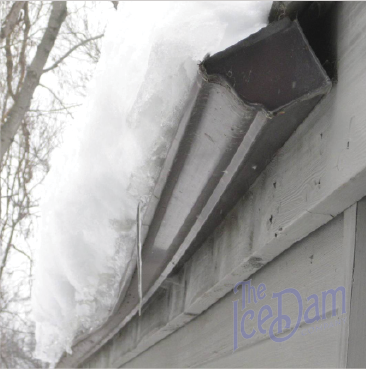
5. Property Damage
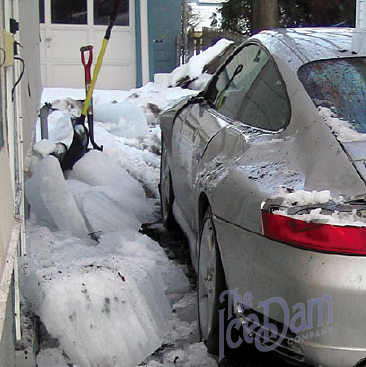
6. Soffit Damage
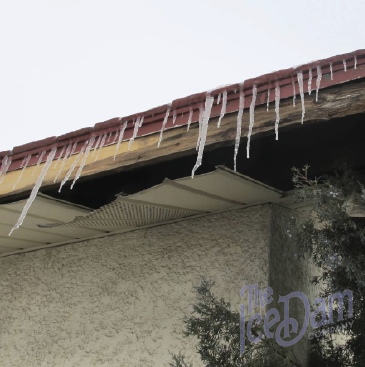
7. Landscaping Damage

8. Falling Ice
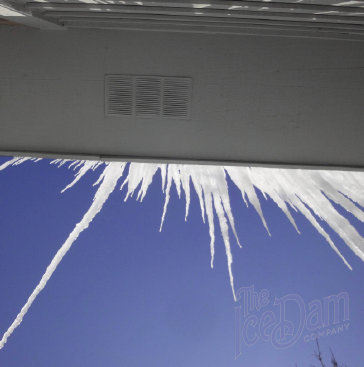
9. Flooring Damage
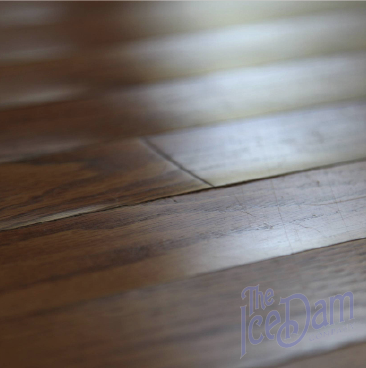
To read more Case Studies click here.
Tags: about ice dams, best ice dam removal in minneapolis, best rated ice dam removal contractor, commercial ice removal, edina ice dam removal, edina ice dam steaming, gutter deicing wire, highest rated ice dam removal company in minneapolis, how do I know I have ice dams, how to file an insurance claim for an ice dam, ice and snow removal, ice dam expert, ice dam removal jerks, minneapolis ice dam removal, orono ice dam removal, roof ice steaming, twin cities ice dam remover, wayzata ice dam removal
Posted in Ice Dam Prevention, Ice Dam Removal, Ice Dams, Misc., Ice Dams: General Info, Water Damage | Comments Off on 9 Common Types of Ice Dam Damage
Tuesday, November 1st, 2016
Steaming Ice Dams is the Fastest, Safest Way to Remove Ice Dams in Minneapolis
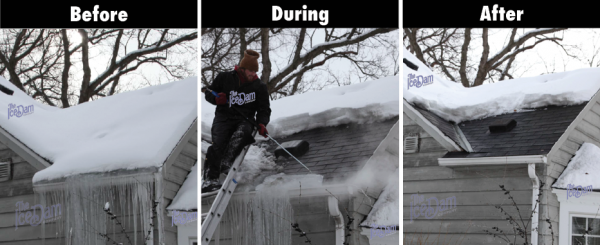
Why Use Steam?
When used properly, a commercial ice dam steamer is the best way to quickly and safely remove an ice dam or other unwanted ice accumulation. Like anything else, it’s possible to use a steamer improperly and damage property. That’s why you should hire an experienced ice removal company. Far more common is damage done to roofs using high temperature pressure washers. Most of our competitors that claim to be using steam are actually using high temp pressure washers. It’s the dirty little secret in our industry. Want to know the easiest way to tell the difference between a steamer and a high temperature pressure washer? If the gun has a trigger, it is NOT a steamer. It’s that simple. More information about Ice Dam Steamers vs High Temp Pressure Washers can be found here.
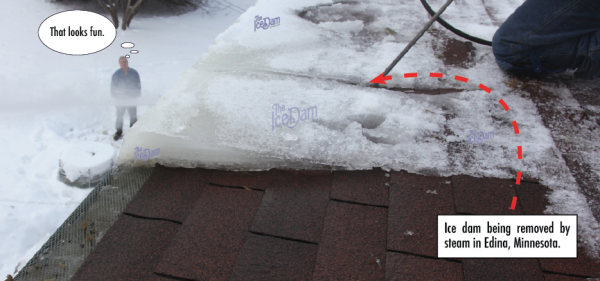
Ice Dam Company is a certified member of IDSAFE : the Ice Dam Steaming Association For Education.

Ice Dam Steaming Association For Education
To read more Case Studies click here.
Tags: about ice dams, best ice dam removal in minneapolis, best rated ice dam removal contractor, edina ice dam removal, edina ice dam steaming, highest rated ice dam removal company in minneapolis, ice dam removal jerks, ice removal company, ice removal professionals, lake minnetonka ice dam removal, minnepolis ice dam removal, orono ice dam removal, roof ice steaming, signs of an ice dam problem, twin cities ice dam remover, wayzata ice dam removal
Posted in Ice Dam Prevention, Ice Dam Removal, Ice Dams, Misc., Ice Dams: General Info | Comments Off on Ice Dam Removal by Steam
Monday, December 22nd, 2014
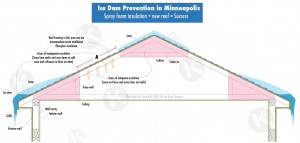
Attic insulation contractor addresses ice dams with new insulation in Edina
Using the words ‘ice dam prevention’ in Minneapolis is a dangerous gamble. It’s true that with certain efforts one can greatly reduce the chances of getting ice dams, it is almost impossible to prevent them altogether. For example, we can do a top quality insulation and ventilation retrofit on a Minneapolis attic only to be thwarted by the fact that the homeowner likes to keep the attic at 90 degrees in the winter. That is a formula for ice dam disaster in Minnesota. There are a number of methods to employ in preventing ice dams (or reducing their severity, in some cases). Here are links to two such approaches used by our sister company, Kuhl’s Contracting, a nationally recognized ice dam prevention company.
Approach to ice dam prevention in Minneapolis #1
Approach to ice dam prevention in Minneapolis #2
Homeowners looking to fix or at least minimize the risk of ice dams in Minnesota are wise to look at the key contributing factors that spawn ice dams. Those are, the weather, insulation, ventilation, air leaks, personal lifestyle and home architecture. We are frequently successful in reducing and/or eliminating ice dams through the use of high performance spray foam insulation systems in combination with enhanced attic ventilation.
Here is another helpful link on the topic of home insulation and ice dam prevention in Minneapolis
Tags: about ice dams, best ice dam removal in minneapolis, best rated ice dam removal contractor, commercial ice removal, construction site ice removal, edina ice dam removal, how to file an insurance claim for an ice dam, ice and snow removal, ice dam expert, ice dam removal jerks, Ice dam Steaming, ice removal company, ice removal from concrete, ice removal professionals, minneapolis ice dam removal, orono ice dam removal, roof ice steaming, signs of an ice dam problem, wayzata ice dam removal
Posted in Ice Dam Prevention, Ice Dams, Misc. | Comments Off on Minneapolis Ice Dam Prevention
Thursday, December 18th, 2014
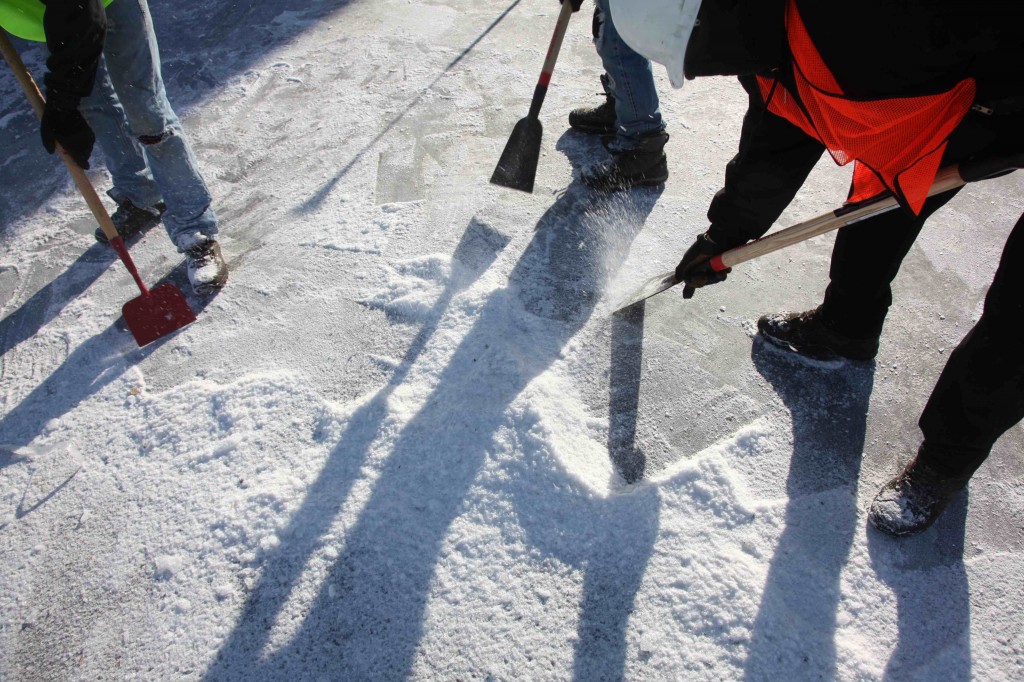
construction site ice removal, commercial ice removal, ice accumulation removal minneapolis, ice dam company
We have been called by property managers and builders to remove ice from a number of odd areas in Minneapolis over the years. Heck, we have even removed ice during the summer around cooling condensers at a chemical plant. While we frequently use our high-end steamers for the removal of ice, sometimes they are simply not appropriate. Such was the case on a recent job at a hotel under construction. A thin layer of ice had built up on the surface of a concrete floor that was perfectly flat…and huge. Using steamers in this application would have possibly resulted in making the problem worse by adding more water to the situation. While our steamers don’t generate much water, any time you melt ice, water is the result. Hence, my concern was that we would create a big mess. I suggested that we go old-school on this challenge. I sent three of my guys out there to hack and chip the ice with shiny, new scrapers. The resulting ice chips were simply blown and swept off the concrete, allowing the project carpenters to follow closely behind and lay out the wall framing without concern. It’s a low tech solution but sometimes that is what’s best.
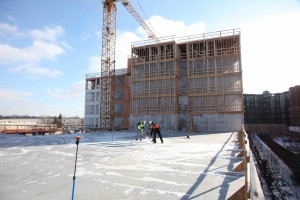
Ice removal minneapolis commercial ice removal from flat surface
Tags: about ice dams, best ice dam removal in minneapolis, best rated ice dam removal contractor, commercial ice removal, construction site ice removal, edina ice dam removal, how to file an insurance claim for an ice dam, ice and snow removal, ice dam expert, ice dam removal jerks, Ice dam Steaming, ice removal company, ice removal from concrete, ice removal professionals, minneapolis ice dam removal, orono ice dam removal, roof ice steaming, signs of an ice dam problem, wayzata ice dam removal
Posted in Ice Dams, Misc. | Comments Off on Commercial ice removal in Minneapolis
Friday, December 13th, 2013
We received a call yesterday that was odd, even by our standards. The other strange part is that it was the second call in two days about the same issue. The homeowner noticed a bad smell coming from the shower and sink drains in her home in multiple locations. Moreover, there was a gurgling noise coming from the drains when the toilet flushed or when the other fixtures were used. The smell was so bad these poor people had to leave their homes. It was the smell of raw sewage, which ranks up there with the rankest of rank. Bummer indeed.
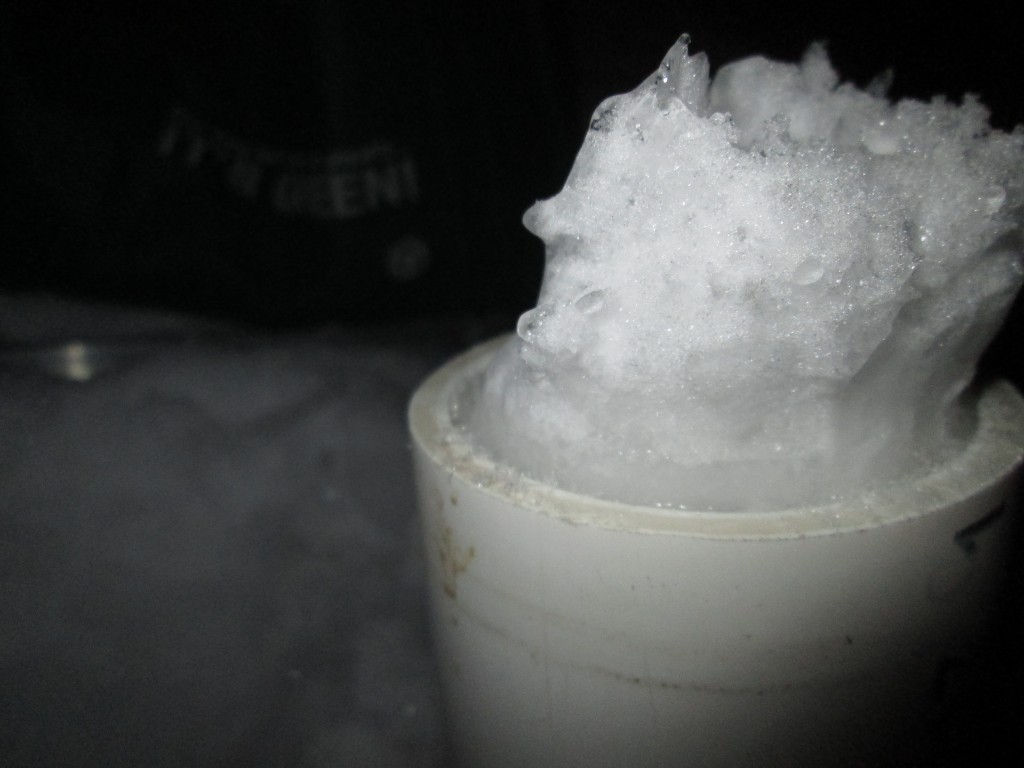
Plumbing vent plugged up with ice and snow
We sent one of our guys over there at 8pm in the dark to fix the issue because we felt so bad for these people. They had kids and the whole family was living at Grandpa’s house until the smell was figured out. Usually snow that falls on top of PVC plumbing vents just falls in and melts somewhere inside the system. In this case it piled up and formed a solid chunk of ice that completely blocked the pipe. We used a heat gun to quickly dislodge the ice and the problem was solved. We still can not figure out why this happened in the first place. Theoretically this could happen on every home in Minnesota but it doesn’t. We will be puzzling over this case for a while.
Tags: ice dam removal edina, ice dam removal jerks, lake minnetonka ice dam removal, minnepolis ice dam removal, orono ice dam removal, twin cities ice dam remover, wayzata ice dam removal
Posted in Ice Dams, Misc. | Comments Off on Plumbing Vent Blocked By Ice – A Mystery Smell Resolved
Thursday, January 3rd, 2013
An article in popular mechanics recently published about Ice Dam Prevention, and What to do if you have ice dam problems gets the basics:
To prevent an ice dam, don’t heat the roof, keep it cold. That way, the snow on the roof eventually dissipates without making large amounts of meltwater. The underside of the roof deck should not exceed 30 F. The best way to maintain low temperatures is by ensuring that there is adequate insulation and sealing gaps that let warm air pass into the attic from the house. The attic must also be ventilated, so that cold air is introduced into it and heated air escapes rapidly. Some remodeling contractors are under the impression that heat passing through the attic helps prevent ice dams, when just the opposite is true. Although excess heat moving from the attic through the roof rapidly melts snow, once the meltwater touches the cold eaves, it quickly freezes and forms an ice dam.
Read the full Popular Mechanics Ice Dam Article Here
…Then the article falls short at really looking at solutions to identify root problems (other then proper insulation) and determining solutions. Instead it looks at situations where there’s a furnace in the attic, and then turns it’s focus to cosmetically hiding symptoms of ice dams. Before you go this route, you really should determine what the underlying problem is, and fix it.
If you don’t feel confident in attempting to diagnose and fix ice dam problems yourself, it’s always a good idea to contact a contractor that has a Minnesota State Certified Energy Auditor on staff, has experience in insulation & ventilation installs, fixing roof leaks and making stuff look good.
Tags: edina ice dam removal, ice dam removal jerks, minnetonka ice dam removal, orono ice dam removal, wayzata ice dam removal
Posted in Ice Dams, Misc., Water Damage | Comments Off on Popular Mechanics: Ice Dams
Thursday, December 20th, 2012
Our friend Reuben Saltzman at Structure Tech did a nice round-up of ice Dam prevention general knowledge, with examples he’s come across while inspecting homes in the Minnesota winter.
Minnesota got dumped on this weekend with nearly fifteen inches of snow in some areas. With hardly any snow last winter, we almost forgot what a real snow storm looked like. I haven’t heard about any concerns over ice dams yet, but I suspect they’ll be coming very soon. The perfect conditions for ice dams are large amounts of snow and temperatures in the teens and twenties, which is what we’re expected to have this week.
Read the Full Post: How to Prevent Ice Dams
Tags: edina ice dam removal, edina ice dams, ice dam removal jerks, minneapolis ice dam prevention, orono ice dam removal, wayzata ice dam removal
Posted in Ice Dam Prevention | Comments Off on How to Prevent Ice Dams
Thursday, January 20th, 2011
Okay, I have have seen it all now. I’ve kept quiet for the last two years but I can’t do it any longer. I just spoke with a woman whose roof was scarred up by a ‘professional’ using a ‘steamer’. The only catch was that the guy wasn’t using a steamer; it was a pressure washer . A number of companies are using high-temperature pressure washers instead of steamers to remove ice from homes. At first glance it might sound like a distinction interesting only to ice geeks. But alas, it is a pretty big deal. In short, pressure washers rely on pressure to remove ice (go figure), not on heat. ‘High-Temperature’ pressure washers operate at slightly higher temperatures than a typical water heater (120-170 degrees). A steamer is an entirely different machine. It converts cold tap water into true steam, which can only be achieved at 250 to 300 degrees. Again, why care? In short it comes down to the fact that steam remove ice much, much faster than high-pressure water. This translates in to time and money (less of both if you use a steamer). Steamers are not only the fastest choice, they are the safest. It doesn’t take a genius to understand that using high-pressure water near frozen roofing materials may not be the best plan. Invariably, regardless of the user, such machines strip off the granules on asphalt composite shingles. This voids manufacturers warranties and it reduces the lifespan of the shingle.
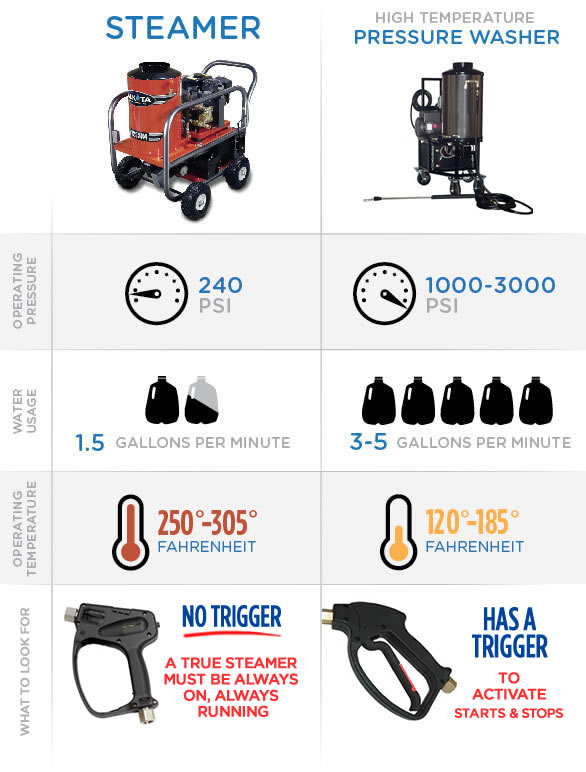
We own three high-temp pressure washers but would never consider using them to cut ice. To the average dude they don’t look much different than a steamer. Use one to cut ice and the difference becomes clear right away. For this reason, conscientious, ethical contractors use actual steamers. Besides The Ice Dam Company, there are a number of outfits in town that use true steamers, including Garlock-French and Absolutely Clean Window Washing. I’ve been around this industry for over 20 years and I have never heard a complaint about those shops. My point is, no matter who you hire to remove your ice, make certain their machinery is as advertised. It must be running at a minimum of 250 degrees over the entire course of the job to function safely and efficiently.
Here’s a great image taken by out friend Reuben Saltzman of Structure Tech, showing what kind of damage a pressure washer can do to an asphault roof when it’s used to remove an ice dam:
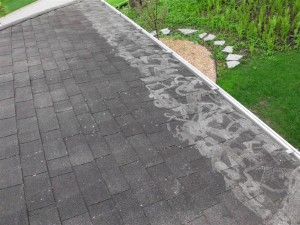
Oops.
Tags: edina ice dam steaming, Ice dam removal, ice dam removal jerks, minnetonka ice dam steaming, orono ice dam removal, roof ice steaming
Posted in Ice Dam Removal | Comments Off on Steaming Ice Dams: Loser alert.
























